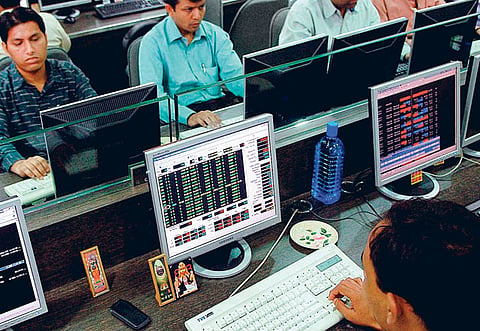Three ideas to address India's economic challenges in 2025
Boasting growth and jobs while managing inflation and expectations is going to be tricky

As the Indian economy slows down to a 2-year low, it is clear that the pandemic recovery has run its course. The post-Covid uptick helped forget the pain of the Covid crash. The overall growth numbers helped many ignore the fact that the recovery was “K-shaped”, meaning that the elites prospered but the poor saw their wages stagnate amid rising inflation.
The K-shaped recovery reflects in the public response to cash transfers in votes. These days it is not just economists and big business who worry about the economic costs of cash transfer welfarism. The middle classes and the elites have also become vocal in their complaints about paying taxes that go into cash transfers rather than, say, making our cities more liveable.
We are about a month away from the next Union budget. In the last budget the government increased taxes on capital gains to raise more money. Investors enjoying a stock market bull run didn’t mind but the backlash on changes to capital gains on sale of property was so stringent the government had to roll it back.
The poor are complaining about lack of jobs and low wages. The rich are complaining about high taxes. This is a Catch-22 situation for the Narendra Modi government. The government needs to boost urban consumption but also worry about stubborn food inflation. Quite some tightrope walk.
This budget cannot be one of incremental continuity. It needs to be transformative. The Indian economy is at a crossroads. The choices made this February can have a far-reaching effect.
India’s economic challenge today is more internal than external. Worries about Donald Trump’s tariff wars and the US Federal Reserve’s rate cuts are exaggerated.
Here are three ideas for Finance Minister Nirmala Seetharaman.
Job Creation-Linked Incentive Scheme
In the 2019 budget the government relented to a long-standing demand of corporate India to slash the corporate tax rate from 30% to 25%. This was done in the hope of incentivising corporate India to increase private investment.
Instead, data shows that they have been keeping the profits. Neither have they increased investment (complaining about lack of demand) nor have they been increasing salaries (why pay more when you can hire cheap)? The stagnant wages mean low consumption.
The 25% tax rate is unfair to upper-middle-class individuals who still have to pay 30%. The government may not have much fiscal room to reduce the upper tax rate, apart from fearing a backlash from the poor.
It would be a good idea to tinker with the corporate tax rates and give incentives to companies that increase the total head count every financial year. Hire more, pay less tax. If we can have production linked incentives (the PLI) to boost manufacturing why can’t we have JCLI, Job Creation-Linked Incentives?
Even token incentives with negligible tax implications can send India Inc the message that the government is serious about the need to make them invest in India and Indians. Future budgets can fine-tune this. Given the urgent need to get more Indian women to work, the tax incentives could also look at the number of women employees hired.
Invest in quality of education
If there is one area where the government should double its investment, it is in the quality of primary education. This is not just a money problem but also a policy problem. The quality of education in both government and private schools for the poor is one of the big things holding India back.
Raghuram Rajan and others have been driving home the point that India’s strength lies in services not low-end manufacturing. If the government is serious about job creation it must ask itself what it can do to boost services. And the number one answer would be quality of education.
An easy way to do this would be to provide incentives to private sector education entrepreneurs who start schools for the poor. The central government can easily start a voluntary all-India test to see how much every primary school student is actually learning. Ratings thus given to schools would help parents know how good a school is, and incentivise schools to invest in quality teaching.
Of course this would need a lot more. It would need the government to invest more in teacher training and retraining. But this can easily be done if there is political capital spent on it.
As Arvind Kejriwal has shown in Delhi, focusing on improving the quality of education can bring good political dividends for politicians.
Invest in skills
Lastly, India’s attempts to make a transformative change in skill training isn’t really taking off. The only way to make this happen to to have a big component of skill training in schools, especially government-run schools where the poor send their children.
By reducing infrastructure spending by just 10%, the government can make huge investments in employment-oriented education. Along with medical colleges, spending on creating new nursing colleges, pharmacists, and medical technicians can help India fill the domestic and global supply gap in medical professionals.
From plumbers to doctors, an investment in human capital will see India export more employable Indians to the world, who will make remittances and reduce the unemployment pressure at home.
Maybe these ideas aren’t enough, but surely everyone will agree that the Indian economy needs a new deal. It can’t be business as usual.
Sign up for the Daily Briefing
Get the latest news and updates straight to your inbox



